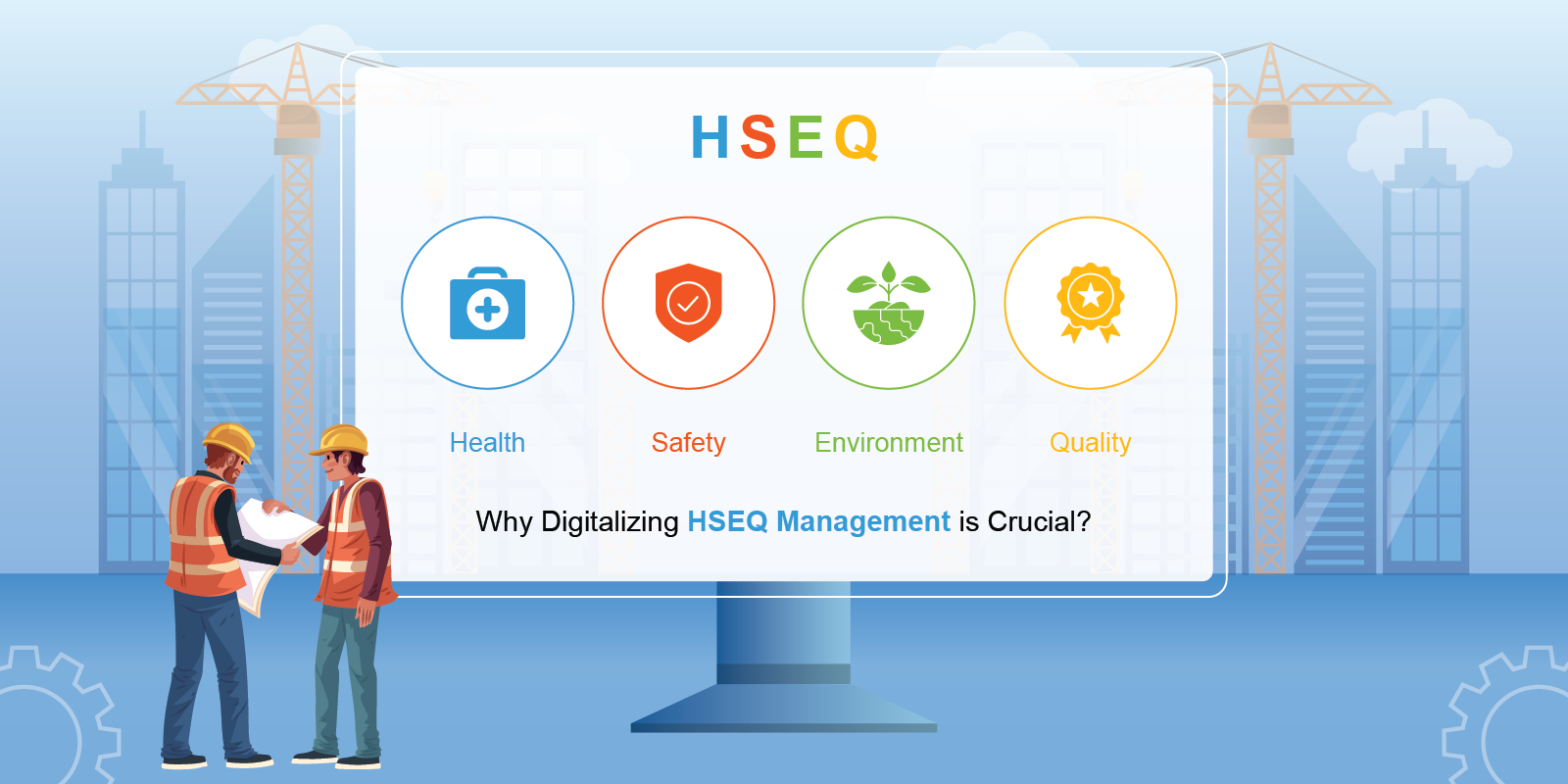Why Digitalizing HSEQ Management is Crucial in Today’s Business Environment

In today’s rapidly evolving business landscape, industries across the board are recognizing the need to digitalize their HSEQ (Health, Safety, Environment, and Quality) management practices. Traditional methods often struggle to keep pace with the complexities and demands of modern organizations. Embracing technology-driven solutions is no longer just an option—it’s a necessity. By transitioning to advanced HSEQ management systems, businesses can unlock significant improvements in operational efficiency, compliance, and overall safety.
Addressing the challenges faced by Industries with Traditional HSEQ System.
- Manual Processes and Paper-Based Systems: Traditional HSEQ management often relies heavily on manual processes and paper-based systems. These outdated methods lead to inefficiencies, data entry errors, and difficulties in accessing and managing information. Manual tracking of safety incidents, quality audits, and compliance documentation is time-consuming and prone to oversight, reducing the overall effectiveness of HSEQ efforts.
- Lack of Real-Time Data and Insights: Conventional HSEQ systems frequently lack real-time data and analytics capabilities, making it challenging for organizations to promptly identify and address issues. Without timely information, response times to incidents are delayed, and proactive decision-making is hindered, which can lead to increased risks and missed opportunities for improvement.
- Fragmented Systems and Poor Integration: Many traditional HSEQ approaches involve fragmented systems that do not integrate well with other business processes. This results in a disjointed view of data, making it difficult to achieve a comprehensive understanding of HSEQ performance across the organization. Poor integration can also lead to duplicated efforts and increased administrative burdens.
- Limited Scalability and Flexibility: Traditional HSEQ methods may struggle to scale as organizations grow or adapt to changing industry standards. These systems often lack the flexibility to accommodate evolving HSEQ requirements and practices, making it difficult to keep pace with industry advancements and regulatory changes.
- Inconsistent Compliance Management: Traditional HSEQ systems can lead to inconsistencies in compliance management due to varying practices across different departments or locations. This inconsistency can increase the risk of non-compliance with regulations, potentially leading to legal issues, fines, and reputational damage.
- Challenges in Incident Reporting and Root Cause Analysis: Manual incident reporting and root cause analysis can be cumbersome and slow, delaying the identification of hazards and the implementation of corrective actions. Traditional systems often lack automated tools to streamline these processes, which can result in prolonged exposure to risks and repeated incidents.
- Difficulty in Driving Continuous Improvement: Without robust data collection and analysis tools, traditional HSEQ systems make it difficult to identify trends, measure performance, and drive continuous improvement. Organizations may struggle to implement best practices and achieve long-term safety, quality, and environmental goals.
How Digitizing HSEQ Operations can Facilitates Better Decision-Making.
- Enhanced Efficiency through Automation: Digital HSEQ management solutions harness the power of automation to revolutionize operational efficiency. By replacing manual tasks with automated workflows, digital reporting, and real-time data collection, organizations can significantly reduce human error and streamline processes. This automation not only boosts accuracy but also accelerates the completion of HSEQ activities, leading to smoother operations and better resource utilization.
- Real-Time Data and Advanced Analytics: Gone are the days of static reports and delayed insights. With technology-driven HSEQ solutions, organizations gain access to real-time data and advanced analytics. This capability allows for precise monitoring of performance, timely tracking of incidents, and the identification of trends. By leveraging these insights, businesses can make well-informed decisions and address potential issues proactively, enhancing overall operational responsiveness.
- Seamless Integration and Centralized Data: Digital HSEQ systems excel in integrating seamlessly with other business applications, creating a cohesive view of data across different departments. This centralization enhances collaboration and communication and supports a holistic approach to HSEQ management. By breaking down data silos, organizations can ensure that all departments work with the same up-to-date information, leading to more coordinated and effective HSEQ practices.
- Scalability and Adaptability: As organizations grow and industry standards evolve, Digital HSEQ solutions are designed to scale and adapt. Unlike traditional systems that may struggle with growth and change, advanced HSEQ systems can accommodate new requirements and support expanding operations with ease. This scalability ensures that businesses can continuously align their HSEQ practices with their evolving needs and industry trends, maintaining agility and competitiveness in a dynamic environment.
Transforming HSEQ Management with Microsoft SharePoint Platform
We understand the challenges faced with traditional HSEQ management approaches and are committed to helping organizations overcome these limitations. Our expertise in Microsoft SharePoint integration provides a powerful solution for modernizing HSEQ practices on Digital Platform.
Microsoft SharePoint offers a robust platform for managing HSEQ processes with enhanced capabilities:
- Centralized Document Management: SharePoint enables efficient storage, retrieval, and management of HSEQ documentation in a centralized location.
- Real-Time Collaboration: Facilitates real-time collaboration among teams, ensuring that everyone has access to up-to-date information and can work together effectively.
- Automated Workflows: SharePoint’s workflow automation features streamline HSEQ processes, reducing manual effort and improving accuracy.
- Advanced Reporting and Analytics: Organizations can leverage advanced reporting and analytics to gain valuable insights into HSEQ performance and drive continuous improvement.
By adopting a modern Digital HSEQ solutions powered by Microsoft SharePoint, businesses can address the pain points of traditional methods and unlock new levels of efficiency, accuracy, and adaptability. At Codevision Technologies PVT. Ltd., we are dedicated to supporting your journey towards a more advanced and effective HSEQ management approach. Let us help you transform your HSEQ practices and achieve greater success in today’s dynamic business environment.
Contact us today to learn how we can help transform your HSEQ practices and drive your business forward.

Microsoft Copilot vs Google Gemini — The Future of AI-Powered Productivity




